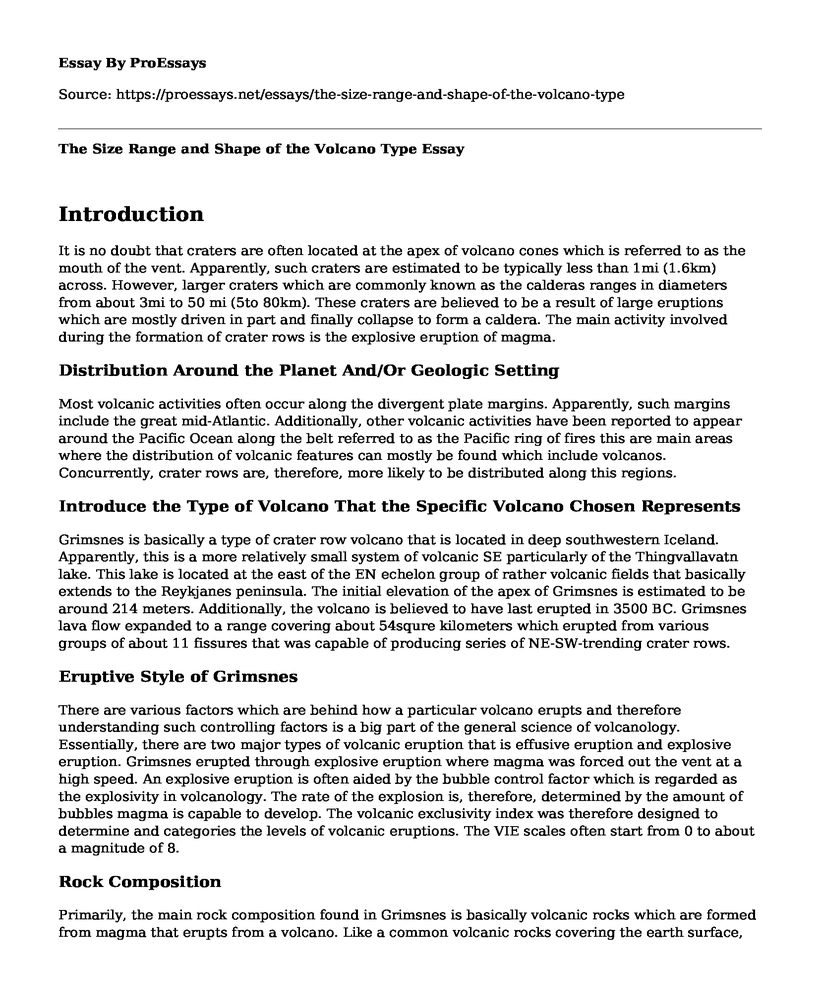Introduction
It is no doubt that craters are often located at the apex of volcano cones which is referred to as the mouth of the vent. Apparently, such craters are estimated to be typically less than 1mi (1.6km) across. However, larger craters which are commonly known as the calderas ranges in diameters from about 3mi to 50 mi (5to 80km). These craters are believed to be a result of large eruptions which are mostly driven in part and finally collapse to form a caldera. The main activity involved during the formation of crater rows is the explosive eruption of magma.
Distribution Around the Planet And/Or Geologic Setting
Most volcanic activities often occur along the divergent plate margins. Apparently, such margins include the great mid-Atlantic. Additionally, other volcanic activities have been reported to appear around the Pacific Ocean along the belt referred to as the Pacific ring of fires this are main areas where the distribution of volcanic features can mostly be found which include volcanos. Concurrently, crater rows are, therefore, more likely to be distributed along this regions.
Introduce the Type of Volcano That the Specific Volcano Chosen Represents
Grimsnes is basically a type of crater row volcano that is located in deep southwestern Iceland. Apparently, this is a more relatively small system of volcanic SE particularly of the Thingvallavatn lake. This lake is located at the east of the EN echelon group of rather volcanic fields that basically extends to the Reykjanes peninsula. The initial elevation of the apex of Grimsnes is estimated to be around 214 meters. Additionally, the volcano is believed to have last erupted in 3500 BC. Grimsnes lava flow expanded to a range covering about 54squre kilometers which erupted from various groups of about 11 fissures that was capable of producing series of NE-SW-trending crater rows.
Eruptive Style of Grimsnes
There are various factors which are behind how a particular volcano erupts and therefore understanding such controlling factors is a big part of the general science of volcanology. Essentially, there are two major types of volcanic eruption that is effusive eruption and explosive eruption. Grimsnes erupted through explosive eruption where magma was forced out the vent at a high speed. An explosive eruption is often aided by the bubble control factor which is regarded as the explosivity in volcanology. The rate of the explosion is, therefore, determined by the amount of bubbles magma is capable to develop. The volcanic exclusivity index was therefore designed to determine and categories the levels of volcanic eruptions. The VIE scales often start from 0 to about a magnitude of 8.
Rock Composition
Primarily, the main rock composition found in Grimsnes is basically volcanic rocks which are formed from magma that erupts from a volcano. Like a common volcanic rocks covering the earth surface, this place is highly dominated by hypabyssal as well as sedimentary rocks.
Frequency of Eruption
In recent times there are definitely few active volcanos present on the earth surface. Apparently, Grimsnes is not an exception as it was reported to have last erupted back in the 3500BC, therefore, painting the picture of a rather extinct volcano.
Cite this page
The Size Range and Shape of the Volcano Type. (2022, Mar 27). Retrieved from https://proessays.net/essays/the-size-range-and-shape-of-the-volcano-type
If you are the original author of this essay and no longer wish to have it published on the ProEssays website, please click below to request its removal:
- The Global Warming: Easy Ways to Prove
- Survey of Local Knowledge in KwaDube, Ulundi and KwaCeza Districts
- Life During the Four Eras Processes of Fossilization Paper Example
- Weather/Climate in South Africa - Essay Sample
- Essay Example on Hurricanes: Magnitude, Frequency & Catastrophe of Katrina
- Essay on American's Water Footprint: 772 m3/Yr vs Global Avg of 1243 m3
- Paper on Companies and Environmental Sustainability







